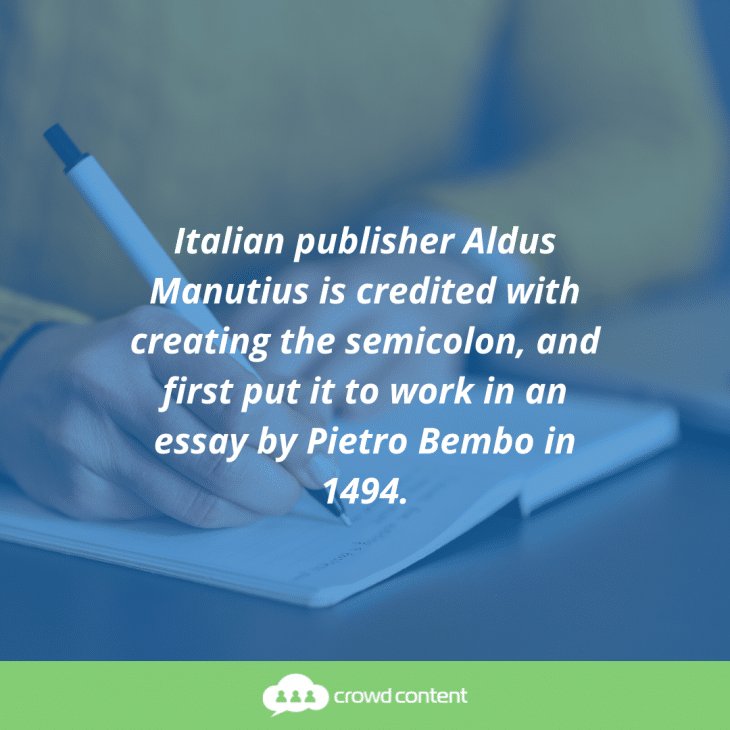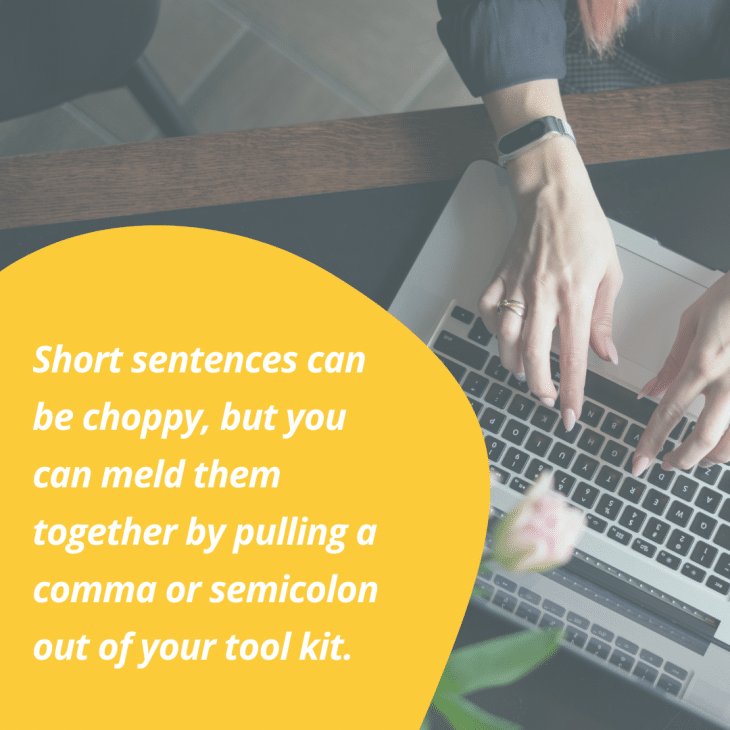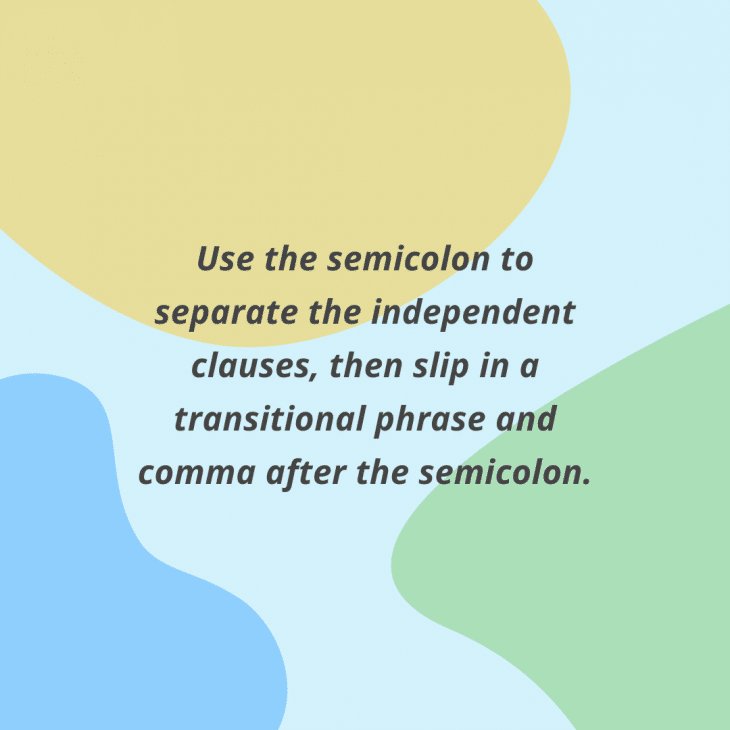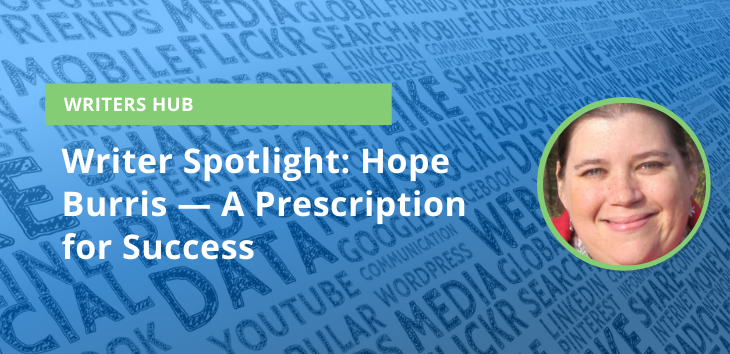These days, you’re more likely to see a semicolon winking at you in casual messages than in an article or blog post. Many writers are unsure of how to use a semicolon; it’s easier to simply avoid it.
Notice what we just did? 😉
Once you understand how a semicolon works, this endearing little symbol can lend all kinds of variety and rhythm to your writing. Let’s look at the semicolon in action; it’s an easy way to expand your punctuation arsenal.
What’s a Semicolon?
A semicolon is a punctuation mark that looks like it’s part colon, part comma. Italian publisher Aldus Manutius is credited with creating the semicolon, and first put it to work in an essay by Pietro Bembo in 1494.

Semicolons are used in two ways:
- To join two independent clauses
- To separate items in a complex list
Why Are Semicolons Confusing?
People are often unsure how to use semicolons because of their similarity to other punctuation marks. Merriam-Webster may describe semicolons best:
“Like a comma, it can separate elements in a series. Like a period or colon, it often marks the end of a complete clause (that is, a sentence part that has its own subject and verb). And like a colon, it signals that what follows it is closely related to what comes before it.”
Comma, period, semicolon — are we confusing things more?
Hang tight. We’re going to walk through examples of the same sentence written with different punctuation to better clarify the roles of these marks. Once you understand the mechanics of how to use a semicolon, you can express thoughts in all kinds of ways.
How to Use a Semicolon
1. Using a Semicolon to Join Independent Clauses
Let’s begin with a quick grammar refresher. When you’ve got a group of words that includes a subject and verb, expressing a complete thought, you’ve got an independent clause.
You can write independent clauses as separate sentences.
- My dad’s birthday is today. I haven’t bought a present yet.
- The project is due tomorrow. She has to work overtime.
- Semicolons can be tricky. This punctuation guide is a big help!
Short sentences can be choppy, but you can meld them together by pulling a comma or semicolon out of your tool kit. Let’s compare how these punctuation marks work with the above sentences.

Using a Comma
When independent clauses are related, you can link them with a comma and coordinating conjunction (for, and, nor, but, or, yet, so).
The clauses then become a single compound sentence:
- My dad’s birthday is today, and I haven’t bought a present yet.
- The project is due tomorrow, so she has to work overtime.
- Semicolons can be tricky, but this punctuation guide is a big help!
Using a Semicolon
Now, let’s try a semicolon. This powerful little symbol joins related independent clauses all on its own. No coordinating conjunction is needed — just put that semicolon to work!
- My dad’s birthday is today; I haven’t bought a present yet.
- The project is due tomorrow; she has to work overtime.
- Semicolons can be tricky; this punctuation guide is a big help!
The semicolon is a handy tool for changing the tempo of your writing and adding variety to sentence structure. It creates a pause that has a little more oomph than a comma, but isn’t as strong as a colon or period. An article in the New York Times by Parul Sehgal describes the semicolon as a “musical notation”.
2. When Using Words Such as Therefore and However
When you have two independent clauses (remember, these are complete thoughts), you can use words or phrases to transition between them. These transitional expressions, or conjunctive adverbs, let you emphasize, contrast, or restate ideas. These types of phrases include:
- for example
- that is
- besides
- accordingly
- furthermore
- otherwise
- however
- thus
- therefore
Give it a try. Use the semicolon to separate the independent clauses, then slip in a transitional phrase and comma after the semicolon.

- My dad’s birthday is today; however, I haven’t bought a present yet.
- The project is due tomorrow; therefore, she has to work overtime.
- Semicolons can be tricky; thus, this punctuation guide is a big help!
3. Separating Complex Lists With a Semicolon
A semicolon also functions as a comma when separating items or phrases in complex lists. It’s helpful for distinguishing between items, especially if there are already commas within those items.
Here are some examples comparing how to use a semicolon and comma in lists.
Use a comma when listing single items.
- We took a road trip through Washington, Oregon, and California.
- Punctuation marks include periods, commas, and semicolons.
Use a semicolon when listing phrases with internal punctuation.
- We took a road trip to Seattle, Washington; Portland, Oregon; and Los Angeles, California.
- Punctuation marks include periods, which are used as a full stop; commas, which come after introductory phrases; and semicolons, which join independent clauses.
Using a Semicolon vs Comma
We’ve got one final tool to help you correctly use semicolons when writing or proofreading. Refer to this handy summary if you aren’t sure whether to use a semicolon or comma.
Use a semicolon if:
1. You’re joining two independent related clauses that are complete thoughts.
- I’m free today; can I help out?
2. You’re joining two independent clauses using transitional words (i.e. consequently, accordingly, thus)
- I’m free today; therefore, I can help out.
Use a comma if:
1. You’re joining an introductory clause (an incomplete thought) and an independent clause (a complete thought).
- Since I’m free, can I help out?
2. You’re joining two independent clauses using a coordinating conjunction (but, and, so).
- I’m free today, so can I help out?
Put Your Writing Skills to Work With Crowd Content
Now that you can wield a semicolon like a pro, we’d love to see what other writing skills you’ve got! Our clients are seeking freelance writers of all levels to complete articles, blog posts, landing pages, and product descriptions. Find out how to get started with Crowd Content today.




